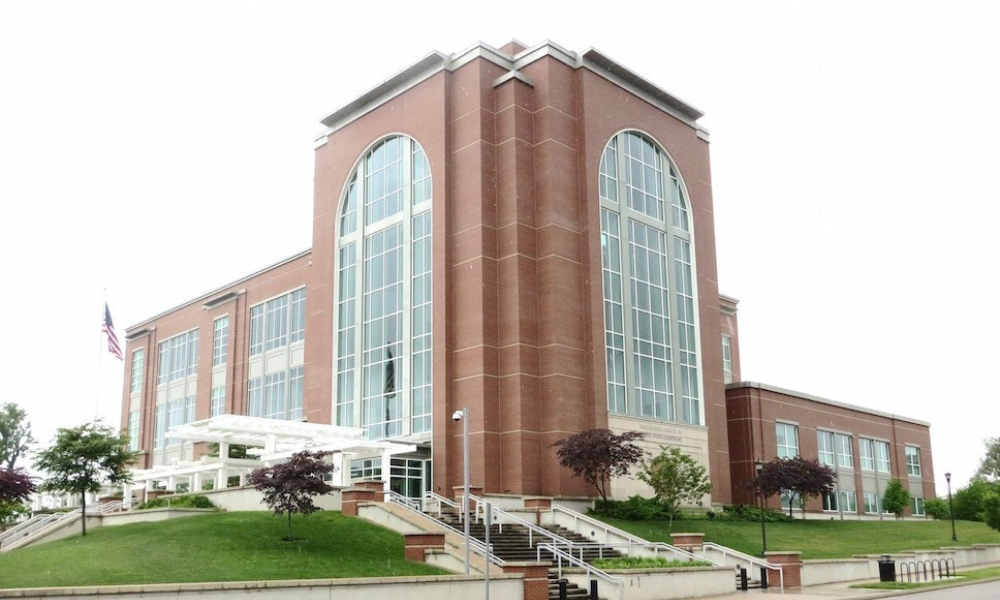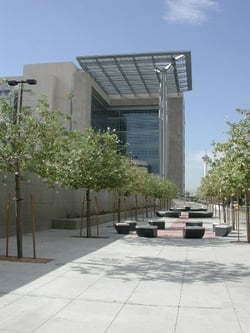Crime Prevention Through Environmental Design (CPTED) has gained momentum in recent years and has been widely adopted by planners, architects, and security professionals for the design of buildings, sites, parks, and urban renewal projects. The CPTED model emphasizes designs that encourage positive behavior and that limit opportunities for crime. Simply put, the primary goal of CPTED strategies is to make it more difficult for a potential offender to commit a crime.
There are four basic CPTED strategies – natural access control, natural surveillance, territorial reinforcement, and maintenance. In this blog, I’ll discuss how the first of these strategies - natural access control - can be implemented to optimize security at your courthouse.
What is Natural Access Control?
Natural access control is a method used to physically guide users to and through a space via the strategic design of streets, building entrances, signage, lighting, fencing, landscaping/hardscaping, and other techniques. Together these design features create a clear demarcation of public and private spaces, which helps draw immediate attention to unauthorized users who are in private spaces.
Court personnel must balance the highly sensitive nature of the work conducted in a courthouse with the need to accommodate members of the public – a tricky balance to strike. Applying a comprehensive natural access control strategy can help achieve this balance. Natural access features are often used in conjunction with other physical and electronic security measures, such as video surveillance, protective barriers, and door locks. While multiple layers of physical security can sometimes create the feel of an urban fortress, natural access features can instead create the feel of a well-designed space that fits the context of the surrounding community.
Read on for some natural access features that could be considered for your courthouse.
Celebrated Entryway
A single entrance to the courthouse is optimal for security. A “celebrated entryway” creates a focal point for the courthouse and ensures that the main entrance is clearly identifiable. Such an entryway can be created by combining the use of signage, logos, lighting, color, pavement, and/or a monumental design. These components draw users to the courthouse main entrance and help prevent unauthorized access to other areas of the building.
The image below provides an example of a celebrated entryway that combines color, artwork, signage, landscaping, clearly defined walkways, and lighting to effectively direct courthouse users to the main entrance.
Celebrated entryway
Signage
Clear directional signage on both the exterior and interior of the courthouse is critical to reinforcing natural access control. Warning signs should also be provided to clearly identify unauthorized spaces. Pedestrian-scale signage, which is positioned at a height that allows for easy reading, should be used and should be illuminated in the dark. Signage should use large, bold graphics, and directives should be simple and easy to understand in all languages that are common to the area. This is important not only for crime prevention, but also in the event of an emergency.
Lobby kiosks that display case information - including case name, time of proceeding, and courtroom location - are another effective way to enhance wayfinding and to direct visitors to the appropriate location in the courthouse. The use of signage and kiosks can reduce the likelihood of courthouse visitors wandering into unauthorized areas.
Lobby kiosk
Lighting
Adequate lighting helps guide users to the main entrance of the courthouse and, once inside, assists in directing visitors to authorized areas. All pedestrian access walkways and access routes should be illuminated to one footcandle to ensure proper visibility. Pedestrian-scale lighting and illuminated bollards may be used on the courthouse exterior to guide users and to prevent shadowy hiding places. A best practice is to conduct a lighting survey to ensure that lighting complies with Illuminating Engineering Society (IES) standards.

Exterior lighting
Fencing
Fencing around the perimeter of a courthouse helps create a clear boundary. It creates an identifiable border and prevents a perpetrator from entering a location casually. CPTED-approved fencing is typically 6’ high and is see-through, which prevents blocking lines of sight and providing areas of concealment for potential perpetrators. Fencing should also be installed around restricted areas of the site, such as mechanical spaces or staff parking areas, to signal to users that those spaces are off limits.
See-through fencing
Landscaping/Hardscaping
Landscaping and hardscaping features can be an effective way to help define natural access to your courthouse. Clearly lining walkways with landscape features and using pavement treatments - such as an interesting pattern of stamped concrete, stone, or brick - helps guide users to the main entrance. Consider engaging the services of a landscape architect to develop the most effective design for your courthouse. Note that it’s important to design landscaping in a manner that allows for unobstructed views of the surrounding area. And it’s equally important to develop a maintenance plan for any landscaping features to preserve natural surveillance and to signal to users that there is a sense of ownership at the courthouse.
Landscaping and hardscaping features
Even Small Changes Can Make a Difference
The strategies I’ve recommended above are most effective when implemented as part of a comprehensive crime reduction strategy. Applying all of the CPTED principles – natural access control, natural surveillance, territorial reinforcement, and maintenance – in conjunction with other physical and electronic security measures will provide the greatest level of protection for your courthouse. Since your budget may not accommodate larger-scale security improvements in the short term, consider phasing in some of these smaller-scale natural access control strategies. Even small improvements can help create a welcoming setting that supports the operations of the courthouse while keeping all visitors, judges, and staff safe.
_______________________________________________________









.jpg)
.jpg)
.jpg)
.jpg)
.jpg)
.jpg)


.jpg)
.jpg)
-1.jpg)
.jpg)
.jpg)
.jpg)
.jpg)
.jpg)

